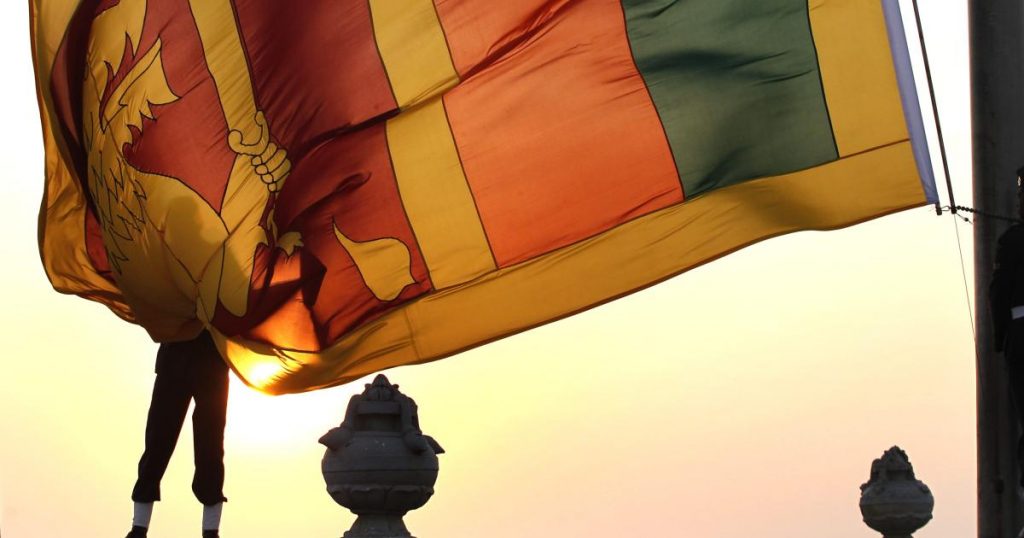
Reckless populist measures can, in the long run, potentially take some Indian states down the path of Sri Lanka, a country now roiled by its worst economic crisis.
In 1991, it was India on the precipice due to fiscal imprudence, a deficit in the balance of payments, and excess reliance on imports, all building up to a crescendo amid the first Gulf War.
It is now the island nation’s turn.
Sri Lanka’s worst economic crisis
Despite transitioning into an upper-middle-income country, Sri Lanka has, over the years, failed to attract much foreign direct investment or diversify its exports.
It sustained growth through international sovereign bonds and expensive short-term external borrowing. These funds were channelled into education, infrastructure, and healthcare, besides maintaining financial liquidity and promoting better macroeconomic policy.
By April 2021, Sri Lanka’s external debt had touched $35 billion.
There were other problems, too. Extravagant tax cuts dried up revenue. A large-scale shift to organic farming set food prices afire. By the time covid-19 struck, followed by attendant troubles like supply chain disruptions, Sri Lanka’s economic condition was, to say the least, precarious.
In March, inflation zoomed to 17.5%, the highest since 2015, and forex reserves dwindled to $1.9 billion, enough only for a month’s imports.
Its debt-to-GDP ratio is now at an alarming 120%—anything over 59.42% is deemed unhealthy for the country. Not surprisingly, on April 12, the government defaulted on all its outstanding foreign dues.
The country has to repay $4 billion in debt this year. Its sovereign bonds now will be maturing every year till 2030—this year, till July alone, it will have to service $1 billion worth of them, potentially depleting half its existing reserves.
Deep political and economic tumult has followed as there is no money to pay for food and fuel imports. Protests have broken out countrywide. Some frantic civilians have even fled to India, a country that remains stable.
However, some of India’s states themselves may have the makings of a crisis.
Indian states’ overriding populism
On April 3, during a four-hour-long meeting with prime minister Narendra Modi, some bureaucrats expressed concerns that populist schemes in states such as Punjab, Andhra Pradesh, and West Bengal may end up wrecking their economies as they did in Sri Lanka, The Times of India reported.
Endless freebies had put these states’ finances (pdf) under severe strain. In 2017, the central government’s fiscal responsibility and budget management panel suggested bringing the cumulative government debt to 60% of the GDP by 2022-2023 (pdf). A ceiling of 40% was set for the centre and 20% for states.
However, Gujarat (21.4%) and Maharashtra (20.4%) aside, most others’ figures are in excess of 20% (pdf). A handful of them is closer to even a full-blown crisis.
Some of the financial parameters of Punjab, a highly indebted state, for instance, are identical to Sri Lanka’s. Its debt-to-GDP ratio is now the highest in the country at 53.3%, in contrast to the ceiling of 20%.
The new Punjab chief minister Bhagwant Mann, however, had promised a fresh bouquet of freebies in the run-up to his party’s election to power earlier this year. This included Rs1,000 a month for every woman aged over 18 and 300 units of free electricity for homes. Together, these will account for a revenue outgo of around Rs 17,000 crores a year.
Ironically, after gaining power, Mann sought a relief package of Rs 1 lakh crore from the central government.
Similarly, in West Bengal, agriculture-related schemes and various other freebies have drained the government’s finances. Its debt constitutes more than a third of its state GDP, while its tax revenue has often accounted for less than a third of its total annual receipts in recent years.
Likewise, Rajasthan and Chhattisgarh have reinstated discarded pension schemes, with few new sources of income to cover for them.
Others like Jammu and Kashmir, Chhattisgarh, Madhya Pradesh, and Himachal Pradesh had relatively higher fiscal deficits in 2021-22, indicating their overall annual borrowing requirements.
The problem of states’ low revenues
While states are entitled to a portion of central revenues and the goods and services tax, their independent sources of income are limited to excise on alcohol, value-added tax on petrol, receipts from property-sale, and motor vehicle registration.
Yet, they must spend on health, social welfare, and other critical areas. Expenditure in these segments has increased in recent years, especially during the pandemic. Many of the states, thus, have been forced to give fiscal prudence a pass, ballooning their overall debt burden to a 15-year high.
Things worsened in 2020 after the central government itself failed to share GST revenue with the states. This was a first since the tax’s inception in 2017 and was precipitated by the pandemic.
It’s about time now that various levels of government brainstormed to find a way out of the states’ financial quandary. India, after all, is a union of states.
